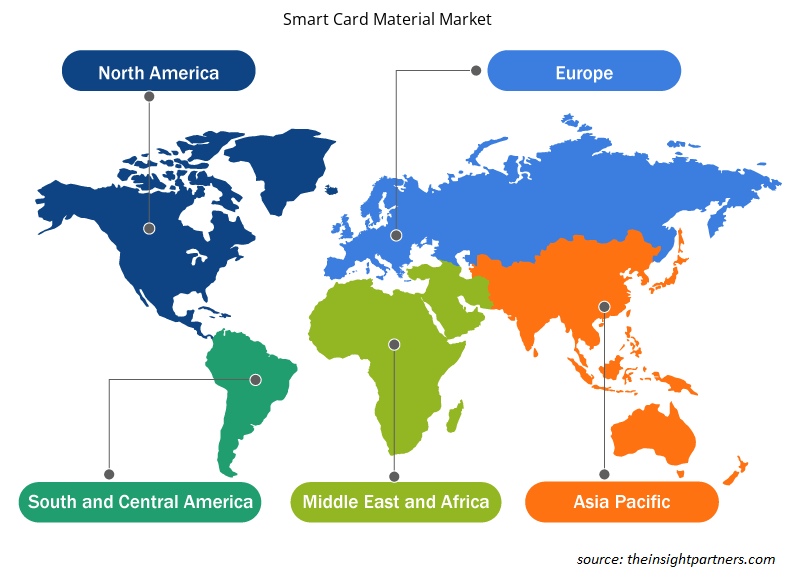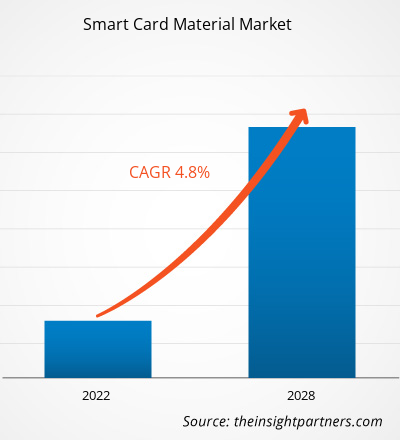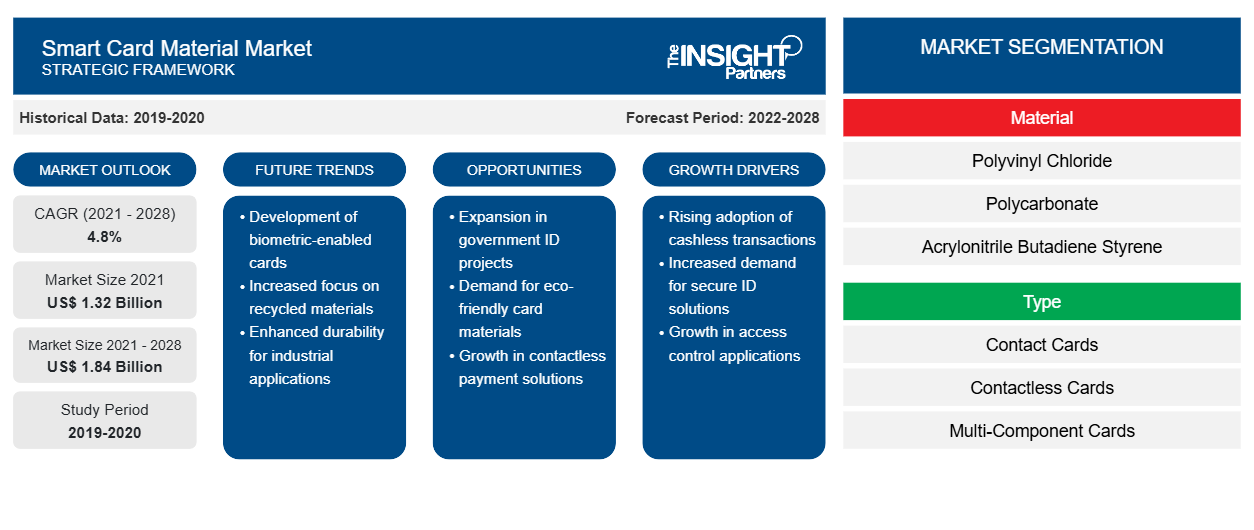智能卡材料市场规模预计将从 2021 年的 13.2457 亿美元增至 2028 年的 18.3778 亿美元;预计 2021 年至 2028 年的复合年增长率为 4.8%。CAGR of 4.8% from 2021 to 2028.
智能卡是一种芯片卡,是一种塑料卡,内含嵌入式计算机芯片(内存或微处理器类型),用于存储和处理数据。这些数据通常与价值或信息(或两者)相关,并存储在芯片内进行处理。智能卡材料是指制造这些卡时使用的化学材料。这些材料支持在其上嵌入和打印信息。
2020 年,亚太地区占据了全球智能卡材料市场的最大份额。由于电信领域智能卡的使用日益增多,该地区对智能卡材料的需求正在增加。此外,全球化趋势的上升;以及银行、金融服务和保险 (BFSI) 行业的蓬勃发展是该地区智能卡材料市场增长的关键因素。BFSI) industry are key factors favoring the smart card material market growth in the region.
定制此报告以满足您的需求
您可以免费定制任何报告,包括本报告的部分内容、国家级分析、Excel 数据包,以及为初创企业和大学提供优惠和折扣
-
获取此报告的关键市场趋势。这个免费样品将包括数据分析,从市场趋势到估计和预测。
COVID-19 疫情对智能卡材料市场的影响
持续的 COVID-19 疫情彻底改变了化学和材料行业的现状,影响了智能卡材料市场的增长。多个工业部门业绩大幅下滑,影响了对智能卡材料的需求。疫情对不同应用领域的影响各不相同。数据流量和语音服务的激增使许多电信公司受益,包括宽带和移动数据中心运营商。然而,政府实施的封锁措施扰乱了智能卡制造所需的 PVS、ABS 和 PETG 等原材料的供应链。疾病的蔓延对政府和 BFSI 部门的运营产生了不利影响。然而,随着各经济体计划恢复运营,预计未来几年全球对智能卡材料的需求将上升。
市场洞察
电信和医疗保健行业显著增长
智能卡在电信领域应用广泛。该领域最主要的智能卡应用形式是用户识别模块 (SIM) 卡或通用集成电路卡 (UICC)。这些智能卡主要由聚氯乙烯 (PVC) 和丙烯腈丁二烯苯乙烯 (ABS) 材料制成。过去几年,该领域应用中使用的智能卡技术不断进步,从而推动了这些卡的消费。此外,世界各地的医疗保健组织都在实施具有广泛功能和应用的智能医疗卡。
智能卡材料市场区域洞察
Insight Partners 的分析师已详尽解释了预测期内影响智能卡材料市场的区域趋势和因素。本节还讨论了北美、欧洲、亚太地区、中东和非洲以及南美和中美洲的智能卡材料市场细分和地理位置。

- 获取智能卡材料市场的区域特定数据
智能卡材料市场报告范围
| 报告属性 | 细节 |
|---|---|
| 2021 年市场规模 | 13.2亿美元 |
| 2028 年市场规模 | 18.4亿美元 |
| 全球复合年增长率(2021 - 2028) | 4.8% |
| 史料 | 2019-2020 |
| 预测期 | 2022-2028 |
| 涵盖的领域 |
按材质
|
| 覆盖地区和国家 |
北美
|
| 市场领导者和主要公司简介 |
|
智能卡材料市场参与者密度:了解其对业务动态的影响
智能卡材料市场正在快速增长,这得益于最终用户需求的不断增长,而这些需求又源于消费者偏好的不断变化、技术进步以及对产品优势的认识不断提高等因素。随着需求的增加,企业正在扩大其产品范围,进行创新以满足消费者的需求,并利用新兴趋势,从而进一步推动市场增长。
市场参与者密度是指在特定市场或行业内运营的企业或公司的分布情况。它表明在给定市场空间中,相对于其规模或总市场价值,有多少竞争对手(市场参与者)存在。
在智能卡材料市场运营的主要公司有:
- 伊士曼化学公司
- 中国石油天然气股份有限公司
- 索尔维公司
- 肯一
- 沙特基础工业公司
免责声明:上面列出的公司没有按照任何特定顺序排列。

- 了解智能卡材料市场顶级关键参与者概况
应用程序洞察
根据应用,智能卡材料市场细分为 BFSI、政府、电信、零售、医疗保健、酒店等。2020 年,电信部门占据了智能卡材料市场的最大份额。智能卡用作预付费(储值存储卡)电话卡和手机中基于微处理器智能卡的 SIM 卡或 UICC。就数量和价值而言,该领域最畅销的智能卡产品是 SIM 和 UICC。
全球智能卡材料市场的一些参与者包括伊士曼化工公司、中国石油天然气股份有限公司、索尔维公司、KEM ONE、沙特基础工业公司、3A Composites GmbH、帝人有限公司、LG 化学、巴斯夫欧洲公司和西湖化学公司。
报告亮点
- 智能卡材料市场的渐进式行业趋势,帮助参与者制定有效的长期战略
- 在发达市场和发展中市场运营的公司所采用的业务增长战略
- 2019年至2028年智能卡材料市场定量分析
- 全球智能卡材料需求量预估
- 波特五力分析说明了行业内买家和供应商的效力
- 了解竞争市场状况的最新发展
- 智能卡材料市场的发展趋势和前景以及推动和制约智能卡材料市场增长的因素
- 通过强调支撑商业利益的市场策略来协助决策过程,从而推动智能卡材料市场的增长
- 智能卡材料市场规模各节点规模
- 市场详细概述和细分,以及智能卡材料行业动态
- 各地区智能卡材料市场规模及增长潜力分析
智能卡材料市场
按材质
- 聚氯乙烯(PVC)
- 聚碳酸酯(PC)
- 丙烯腈丁二烯苯乙烯 (ABS)
- 聚对苯二甲酸乙二醇酯 (PETG)
- 其他的
按类型
- 联系卡
- 非接触式卡
- 多组件卡
按应用
- 金融保险业协会
- 政府
- 电信
- 零售
- 卫生保健
- 酒店业
- 其他的
公司简介
- 伊士曼化学公司
- 中国石油天然气股份有限公司
- 索尔维公司
- 肯一
- 沙特基础工业公司
- 3A复合材料有限公司
- 帝人株式会社
- LG化学
- 巴斯夫
- 西湖化学公司
- 历史分析(2 年)、基准年、预测(7 年)及复合年增长率
- PEST和SWOT分析
- 市场规模、价值/数量 - 全球、区域、国家
- 行业和竞争格局
- Excel 数据集
近期报告
客户评价
购买理由
- 明智的决策
- 了解市场动态
- 竞争分析
- 客户洞察
- 市场预测
- 风险规避
- 战略规划
- 投资论证
- 识别新兴市场
- 优化营销策略
- 提升运营效率
- 顺应监管趋势























 获取免费样品 - 智能卡材料市场
获取免费样品 - 智能卡材料市场